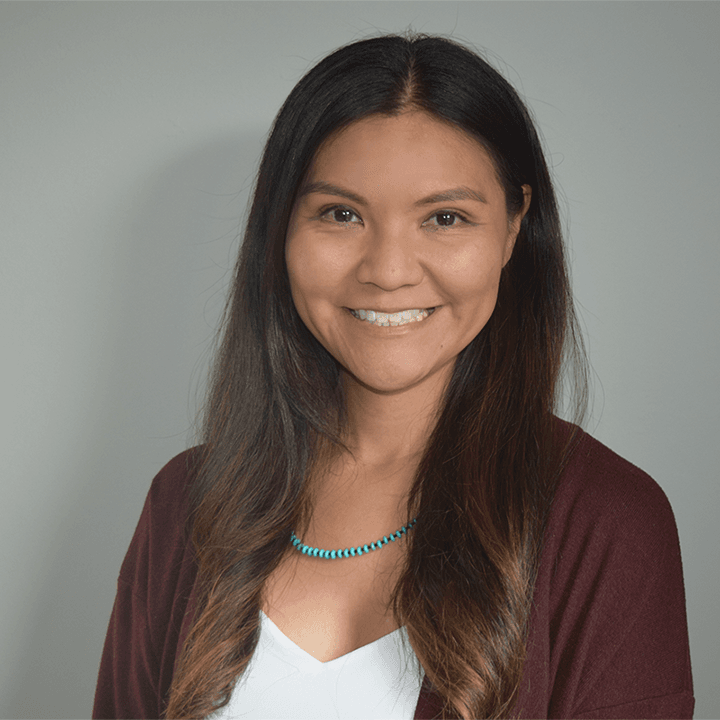Editor's Note | Volume 19 | Issue 1
 A few years ago, my then-editor called on me for a news round-up for the next issue of Native Peoples magazine. ‘Make sure to include the latest on the Violence Against Women Act and Tribes,’ she told me. ‘What’s happening now?’
A few years ago, my then-editor called on me for a news round-up for the next issue of Native Peoples magazine. ‘Make sure to include the latest on the Violence Against Women Act and Tribes,’ she told me. ‘What’s happening now?’
As an independent journalist, I enjoyed the thrill of a new assignment, especially when it had anything to do with Native women: Native women artists, Native women leaders… and the safety of Native women and young girls. My ears would perk up anytime violence against Native women came up, especially after the horrific kidnapping and murder of 11-year-old Ashlynne Mike (Navajo). As an auntie myself, this always hit home.
Immediately, I set to work-, scouring the web to learn who was on the front lines of the Violence Against Women Act (VAWA) and who might be willing to talk to me. In my research, I found a video of the signing of the Violence Against Women Reauthorization Act of 2013. There, standing next to then-President Barack Obama were two Native women, one in a teal shawl and another in a traditional white robe with the most beautiful, beaded medallion. For this article, I knew I had to hear what the women had to say.
Now as I take the baton of Restoration, I am humbled by thoughts of the grandmothers and aunties who came before me-–the ones who are still teaching, speaking out, and who love with all their hearts: the stronghearted ones at the frontlines.
After more research, I came across the National Indigenous Women’s Resource Center (NIWRC). I reached out to the media contact listed on a press release and soon enough, I was interviewing Jacqueline “Jax” Agtuca and Terri Henry about the ins-and-outs of the Tribal provisions provided through VAWA 2013. It included an amendment that restored Tribal criminal jurisdiction over non-Indians who commit domestic violence, dating violence, or certain violation of protection orders on Tribal lands, otherwise known as Special Domestic Violence Criminal Jurisdiction (SDVCJ).
Mid-way through my conversation with Jax and Terri, I realized that while my news round-up piece would be short and succinct, the issue at hand was much more complex. While the gains of VAWA 2013 and SDVCJ were historic, so much more was needed for real, meaningful change. I was hungry for that change.
Fast forward a few more years, and I am still learning from Jax-–and from all the women here at the NIWRC and across the movement for safety of Native women. Now, as I write my first Editor’s Note, that memory has sharpened into focus, is that much clearer, seemingly illuminating a path before me. Now as I take the baton of Restoration, I am humbled by thoughts of the grandmothers and aunties who came before me-–the ones who are still teaching, speaking out, and who love with all their hearts: the stronghearted ones at the frontlines.
I see you.
I heard you.
With Restoration, I know I have a great responsibility and duty to help carry forward the legacy of what this magazine is and represents: Restoration is the vehicle for understanding the existing and emerging issues and barriers threatening the lives and safety of Indigenous women, providing a much-needed Indigenous analysis to make meaningful systemic reforms. Restoration will continue to support the movement for safety and sovereignty with its political lens to guide how we strategically move forward together in removing these barriers to Native women’s safety. Restoration will keep a stronghold on our grandmothers’ hopes that their daughters and granddaughters will once again be held up as sacred to thrive in a violence-free world.
While this is the hope we hold onto, the reality is more heartbreaking, as Indigenous women struggle for safety and justice daily in the face of violence that festers across all sectors of society. The erosion of original protections for Native women is a constant, present-day attack due to the lasting effects of historical and active colonization-–think of the continual loss of and attacks on Indigenous lands, cultures, and languages, not to mention the ever-present oppression and misogyny in our lives.
While Restoration will remain true to its political lens, we hope to expand our analysis and make room for societal issues that are ripe for change, including the visibility of missing and murdered Indigenous women in mainstream media and the overall representation and dehumanization of Native women and girls in larger society.
At the NIWRC, we are also re-grounding ourselves in the inherent connection between land and body, as both are sacred for Indigenous communities yet are under continual attack and exploitation by extractive industries and climate change impacts. These are only a few of the emerging issues we will explore further in the future ahead.
My path as an independent journalist and now with Restoration has come full circle, and it is an incredible honor to help steer the magazine forward. On behalf of everyone here at NIWRC, we could not be more thankful for our sister and auntie Jax-–the ‘beating heart’ of Restoration over the years–for her immense leadership and mentorship for our entire team and the movement for safety of Native women. We are stronger because of her, and we are stronger when we uphold the strength of women in our communities. I look forward to serving Restoration for years to come.





